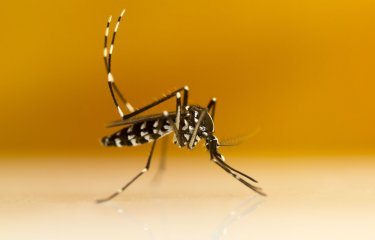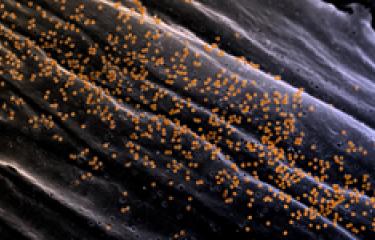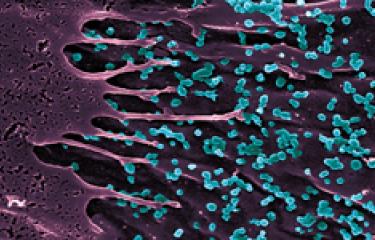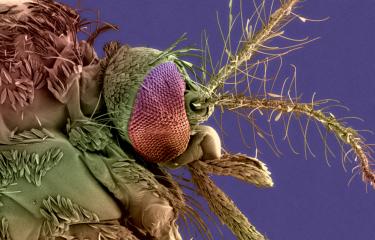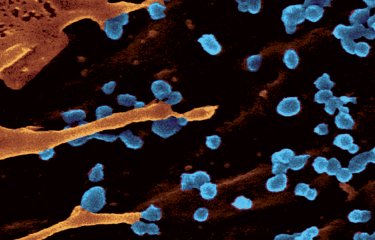Despite the presence of potentially susceptible mosquitoes, the first autochthonous cases of chikungunya on the American continent were not reported until December 2013 when a severe epidemic struck the West Indies. In order to assess the risks of the virus being transmitted and spreading throughout the territory, scientists from the Institut Pasteur and Fiocruz (Brazil) undertook the most wide-scale study ever done to assess the competence of mosquitoes to transmit the virus. Based on their results, the scientists fear that some large events set to take place in South America in the coming months, particularly the FIFA World Cup, will increase viral dissemination and hasten an extensive outbreak in the region.
Press release
Paris, April 10, 2014
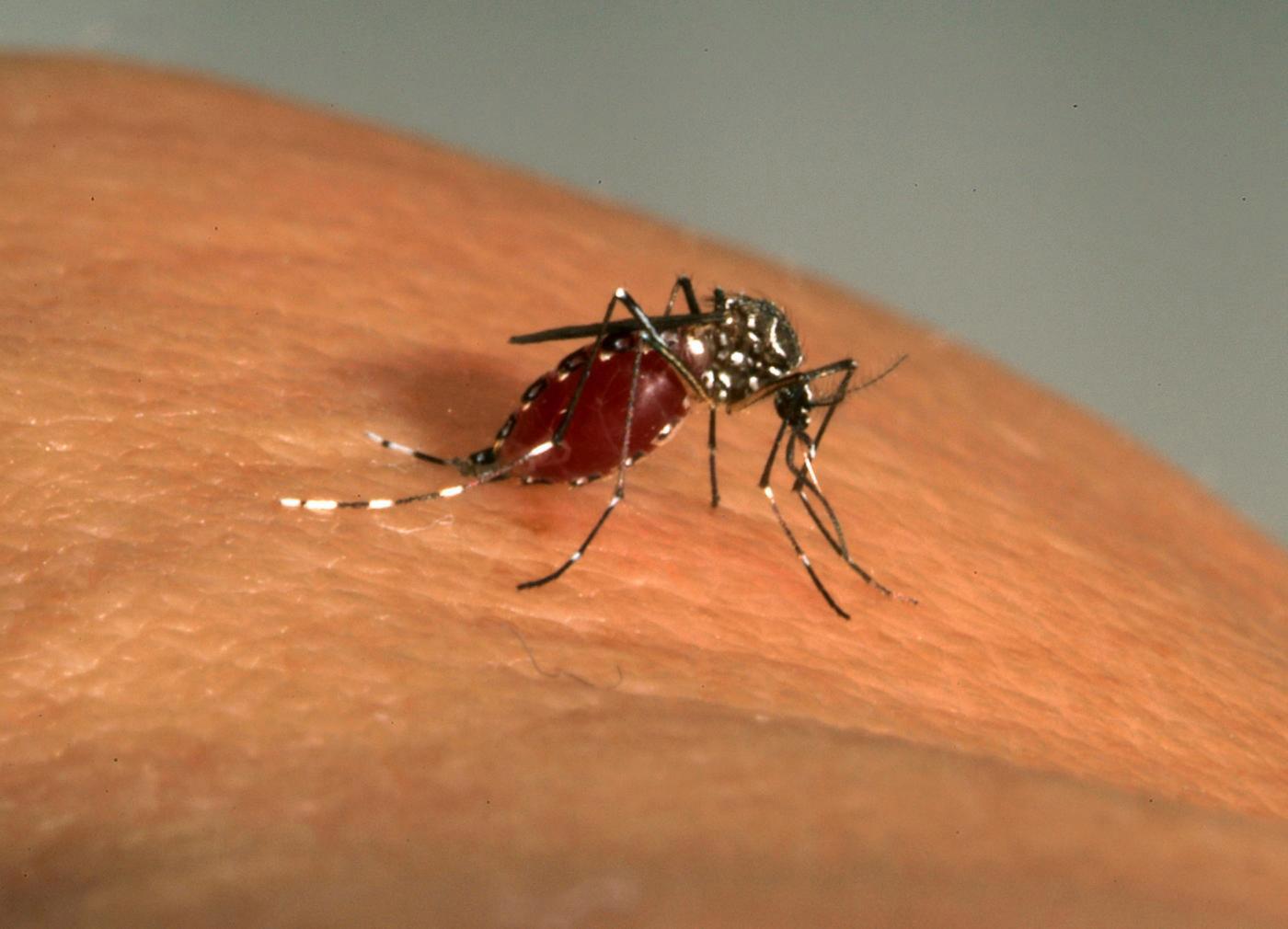
In December 2013, barely had the National Reference Center for Arboviruses confirmed the first cases of chikungunya on the island of Saint Martin in the West Indies than an epidemic of nearly 400 cases broke out. Surprisingly, the December 2013 epidemic marked the first indigenous manifestation (not brought in from another country where the virus is prevalent) of the disease reported in the Americas. The Americas host the two primary species of mosquito vectors and the climatic conditions are ideal for their proliferation. Add this to the high population density and the numerous cases of imported chikungunya reported each year and you have ideal conditions for the spread of this disease.
This is what brought Institut Pasteur scientists and entomologists working under Anna-Bella Failloux (Arboviruses and Insect Vectors laboratory) and Ricardo Lourenço-de-Oliveira (Fiocruz, Brazil) to conduct their study which aimed to map out the risks of the virus spreading throughout North and South America. To achieve this work, they tested the vector competence of 35 populations of Aedes albopictus and Aedes aegypti mosquitoes to assess how effectively they transmitted the virus. The populations were collected from 10 countries across the American continent, making this study the most extensive ever conducted on the subject.
The vector competence of mosquitoes is calculated by measuring how much of the virus is present in the saliva secreted by female mosquitoes. The scientists then tested the two species of mosquito for three strains of the chikungunya virus: the “Asian” strain (responsible for the West Indies epidemic) and two “Reunionese” strains (the first being the original strain which has been isolated since 1952 and the second being a mutated strain of the former). It was the mutated strain of chikungunya that triggered the 2006 epidemic which gravely affected Reunion and the entire Indian Ocean.
Above all, the results of this study show the strong presence of Ae. albopictus and Ae. aegypti mosquitoes on the American continent as well as the cohabitation of these two species in regions such as Florida, Mexico, Panama and Brazil.
Both species of mosquitoes show high levels of infection throughout the studied territory and are capable of transmitting all three strains of the virus. Moreover, transmission efficiency rates can reach alarming highs of up to 83.3% for Ae. aegypti and up to 96.7% for Ae. albopictus. Ae. aegypti, the historical vector of chikungunya, seems to transmit the original strain and the Asian strain of the virus most effectively and, unsurprisingly, Ae. albopictus has a more pronounced affinity for the strain which caused the 2006 epidemic in Reunion.
For Anna-Bella Failloux, this study highlights the risk faced by the American continent at large. Given the current situation, waves of travel and large gatherings of people, such as expected for the FIFA World Cup in Rio de Janeiro (an area where the transmission efficiency of Ae. albopictus for the Reunionese epidemic strain of the virus is particularly high), could trigger an outbreak of disease in the short- or medium-term. However, it must be recalled that chikungunya is a viral disease that is rarely fatal.
- - - - - - - - - - - - - - - - - - - - - - - - -
About Fiocruz
A member institute of the Institut Pasteur International Network since 2004, the Oswaldo Cruz Foundation, or Fiocruz, based in Rio de Janeiro (Brazil) is one of Latin America’s most eminent institutes of science and technology. The Instituto Oswaldo Cruz, as it was originally known, was founded in 1908 as a center for vaccine research. Today, under the aegis of the Brazilian Ministry of Health, Fiocruz conducts a wide range of activities which include developing new research, running a hospital and renowned outpatient services, manufacturing pharmaceuticals (vaccines, drugs, reagents, diagnostic tests, etc.), overseeing the quality control of products and services and implementing social programs.
Source
High vector competence of Aedes aegypti and Aedes albopictus from ten American countries as a crucial factor of the spread of chikungunya, J Virol, published online March 26, 2014.
Anubis Vega-Rúa (1,2), Karima Zouache (1), Romain Girod (3), Anna-Bella Failloux (1), Ricardo Lourenço-de-Oliveira (1,4)
(1) Institut Pasteur, Virology Department, Arboviruses and Insect Vectors laboratory, 25-28 rue du Docteur Roux, 75724 Paris, cedex 15, France.
(2) Pierre and Marie Curie University, Cellule Pasteur UPMC, 25-28 rue du Dr Roux, 75724 Paris, cedex 15, France.
(3) Institut Pasteur in French Guiana, Medical Entomology Unit, Avenue Pasteur, BP 6010, 97306 Cayenne Cedex, French Guiana.
(4) Laboratório de Transmissores de Hematozoários, Instituto Oswaldo Cruz, Fiocruz, Av. Brasil 4365, Rio de Janeiro, 21045-900, Brazil.
¶ Both authors contributed to this study
Contacts
Institut Pasteur Press Office
Marion Doucet – marion.doucet@pasteur.fr - +33 (0)1 45 68 89 28
Nadine Peyrolo - nadine.peyrolo@pasteur.fr - +33 (0)1 45 68 81 47




